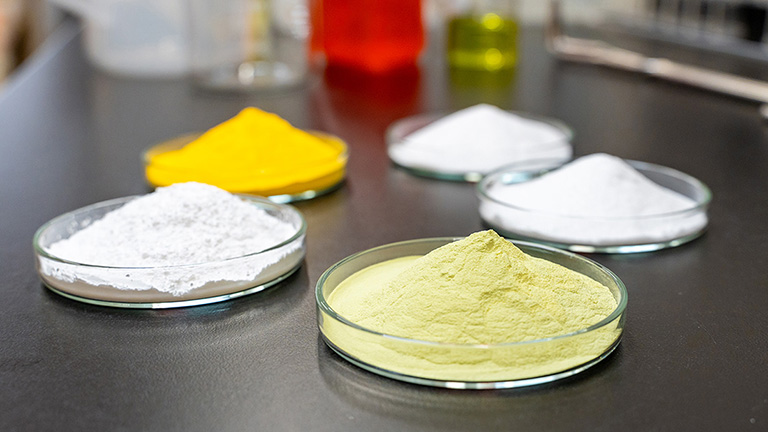Products
Tungsten Compounds
Tungsten (W) is not only famous for its high melting point, but also forms diverse compounds and provides excellent thermal and chemical stability in various industrial processes.

Features
High Heat Resistance and Diverse Chemical Properties
Tungsten (W), a transition metal with atomic number 74, has the highest melting point among all pure metals (approximately 3422 °C). It is also renowned for its exceptional hardness, heat resistance, and corrosion resistance. Tungsten is typically extracted from ores such as ferberite and scheelite, and is used not only in its metallic form but also in a wide range of industrial applications as compounds. Chemically similar to molybdenum, tungsten forms stable oxides and acids predominantly with oxidation state +6 and exhibits a variety of polyacid structures in aqueous solution.
Advanced Functions and Expanding Applications
In industrial applications, tungsten compounds are primarily used in the production of hard materials, petrochemical catalysts, and optical and electronic devices. Ammonium paratungstate and ammonium metatungstate serve as key precursors for tungsten-based catalysts and metallic tungsten. Tungsten trioxide, noted for its semiconducting nature, excellent electrochemical properties, and responsiveness to visible light, has garnered increasing attention in recent years. Beyond its role in electronic materials, tungsten trioxide exhibits electrochromism—reversible color changes induced by voltage—making it a promising material for energy-efficient applications such as smart windows and light-controlling glass in buildings.
Given these properties, tungsten compounds are expected to play an increasingly important role in next-generation environmental and energy technologies. Their unique chemical characteristics make them well suited to address emerging needs in sustainable materials and energy-efficient systems.
